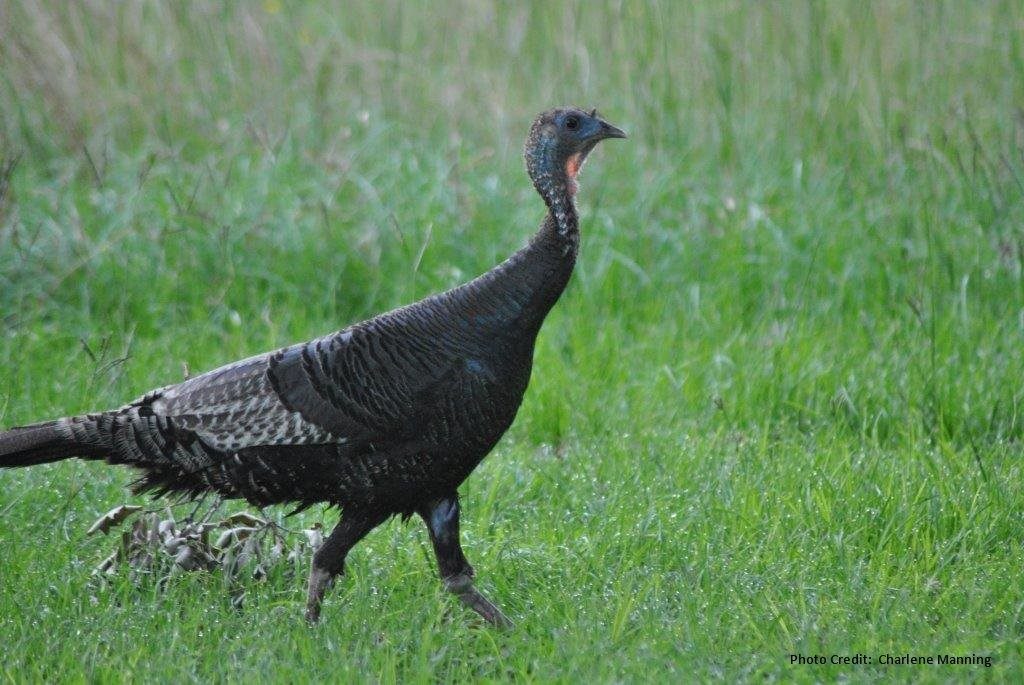
Wild Turkey in Texas
Wild Turkey Restoration in Texas
It is commonly believed that Benjamin Franklin tried to champion the wild turkey as the national symbol instead of the bald eagle. Even though this is not true, Franklin did talk about the negative attributes of the bald eagle and the positive attributes of the wild turkey in a letter to his daughter after the bald eagle was already selected as the national symbol. Regardless, the wild turkey is an iconic North American bird and the sight of strutting gobblers competing for the attention of hens is an unforgettable scene.
The Three Species of Turkey in Texas
In Texas, there are three different subspecies of the North American wild turkeys: Rio Grande, Eastern, and Merriam’s.
Rio Grande wild turkeys (Rios) are the most abundant and occupy more of the Texas landscape than the other two, but Easterns are the most numerous and widespread across the United States.
The main difference between the three are the landscapes for which they are adapted and the color of the tail feather tips, which are tan on Rios, dark brown on Easterns, and lighter on Merriam’s.
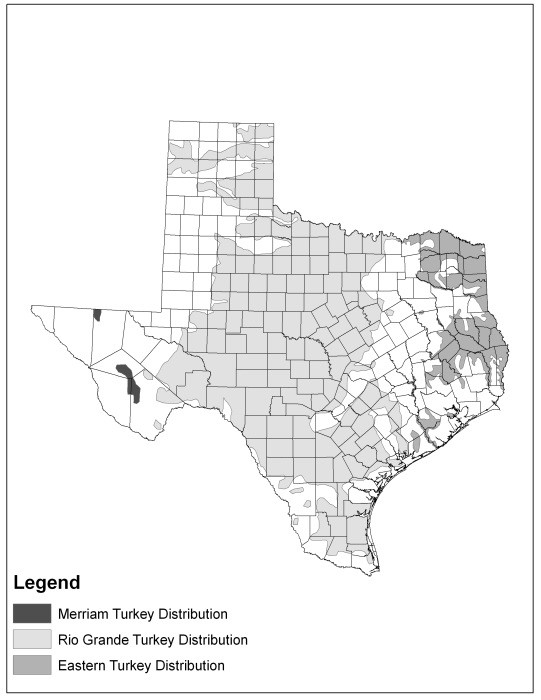
Wild Turkey Declines
Wild turkeys suffered dramatic population declines in the 1800’s and early 1900’s due to overhunting and habitat loss as many acres of forestland were cleared.
The low point was in the 1920’s when wild turkey numbers fell to 100,000 in Texas, and less than 100 birds were estimated in the Pineywoods and Post Oak Savannah ecoregions in 1942.
Wild Turkey Restoration
Since that time, hunting regulations, improved habitat management, and restocking programs have helped to restore wild turkey populations to an estimated 460,000.
After restocking efforts, Rios were able to establish and expand their population, although population declines have been noted over the past couple of decades in some areas. Breeding bird survey data collected in Texas has shown a rapid increase in turkey observations over the past few years (see table below).
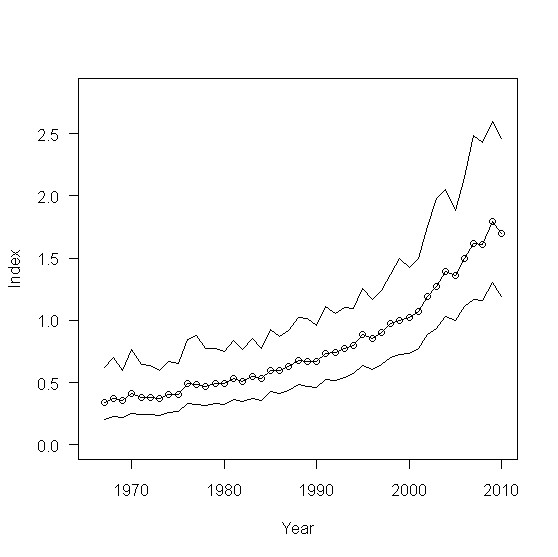
Easterns, on the other hand, have not responded as well, despite over 7,000 birds being relocated to east Texas since 1979. It is believed the lack of large areas of contiguous, or connected, tracts of quality habitat combined with low survival rates immediately following stocking efforts are the main reasons why Easterns have not been able to establish.
Until 2003, Texas Parks and Wildlife Department (TPWD) employed the block-stocking technique of 15 to 20 birds per site, with little success. Researchers in the Wildlife and Fisheries Department at Texas A&M University then determined that a super-stocking technique of 80 birds per site would be more successful. The assumptions underlying the success of the super-stockings are that more birds transplanted in one location will result in more surviving and establishing a breeding population.
Required Wild Turkey Habitat
Wild turkeys have core habitat needs: food, cover, and water. As a ground-nesting bird, wild turkeys require ground cover from native grasses and forbs at least 12 inches tall for concealment during nesting (late March to late June). The act of caring for young, known as brood-rearing, occurs after poults (turkey hatchlings) hatch from their eggs and follow the hen in search of food, consisting primarily of insects for the first 4 weeks of life.
Since poults are flightless for the first 10 to 14 days of life, adequate cover is necessary to protect them from predators. Water is also important, especially in the more arid west Texas.
Nesting usually occurs about ¼ mile from creeks and man-made standing water sources. Successful nests and brood rearing is critical to sustaining and growing turkey populations. This recruitment of new birds into the population is driven by the number of nesting hens, their nest success rate, and the number of poults that hatch and reach 4 weeks of age.
Current Research
Researchers at Texas A&M University and Texas Tech University have made significant strides in understanding the habitat needs of Rios in the Rolling Plains, Edwards Plateau, and south Texas. Questions still remain for Easterns. The optimal nesting and brood-rearing habitat for Easterns is not completely understood, but researchers from Stephen F. Austin State University (SFA) began a study in the winter of 2014 after releasing around 247 birds on three different sites in east Texas. These wild turkeys were captured and transported from several different states including Alabama, Kansas, Missouri, Tennessee, South Carolina and West Virginia, and some were fitted with GPS transmitters that are worn much like a backpack. Each transmitter will provide the location of the bird throughout the day, giving researchers great insight into what kind of habitat Easterns most prefer.
The Texas state chapter of the National Wild Turkey Federation has provided financial support for the restocking efforts, with TPWD funding restockings as well as the research project with SFA.
TPWD is actively looking for new areas in east Texas to restock Eastern wild turkeys. So….. How can landowners participate in a super-stocking?
Habitat, habitat, habitat! At least 10,000 acres that support a mosaic of forests and openings committed to managing wild turkey habitat is required. Most east Texans don’t own 10,000 acres, which means you have to get along with your neighbors!
Landowner co-ops, or wildlife management associations, are encouraged for participation in super-stockings. TPWD biologists typically serve as advisors to these co-ops.
To learn more about joining or creating a wildlife management cooperative in your area check out our article Landowner Cooperatives: Maximize Your Wildlife Management Efforts
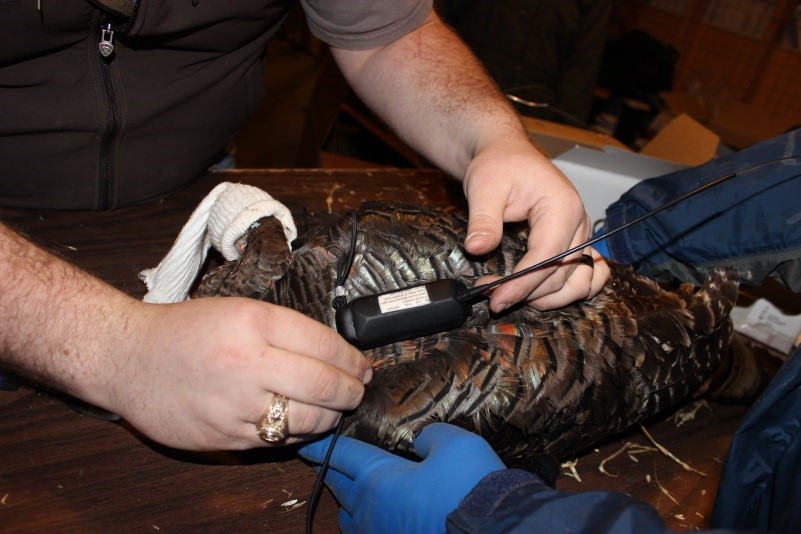
For both Easterns and Rios, proper grazing and brush management is a necessity. Providing boot to knee high grasses during the spring and early summer months will help ensure there is sufficient nesting and brooding habitat during a wild turkey’s most vulnerable period of life. Brush management in the form of removal of undesirable brush species for Rios or thinning and clearing timber stands to create openings for Easterns is essential. Prescribed burning is extremely beneficial when done on a 3 to 5 year rotation in Rio habitat, and 2 to 3 years in Eastern habitat.
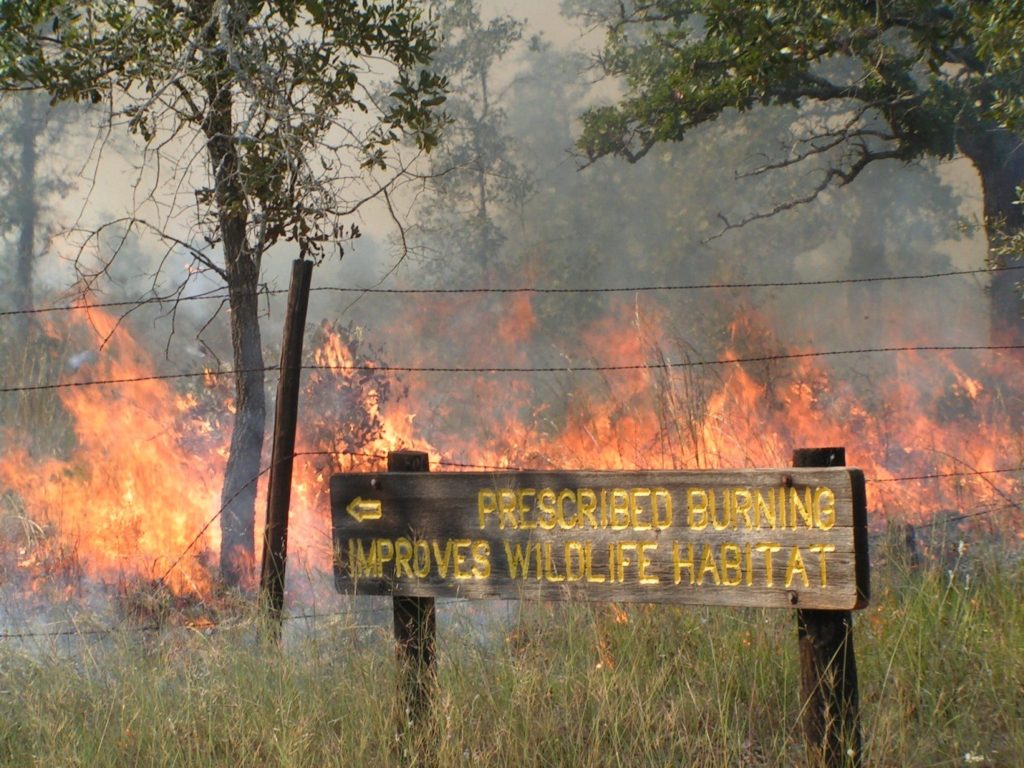
Prescribed burning at the Gus Engeling Wildlife Management Area helps to reduce woody encroachment to maintain openings and increase plant diversity. Photo by Jason Hardin, Texas Parks and Wildlife Department
The Texas A&M Institute of Renewable Natural Resources estimates that 84% of Texas is privately owned, meaning that landowners are the key to sustaining wild turkey populations across Texas. To aid landowners in their habitat management, the Texas A&M AgriLife Extension Service and TPWD are in the process of developing publications on Eastern wild turkey biology and management and have already produced several publications for Rio Grande wild turkey management that are available at the AgriLife Bookstore.
Publications:
- Rio Grande Wild Turkey in Texas: Biology and Management (B-6198)
- Habitat Appraisal Guide for Rio Grande Wild Turkey (SP-317)
- Managing Brush Near Rio Grande Wild Turkey Roosts (SP-382)
- Guide to Abundance Estimation Techniques for Rio Grande Wild Turkey (SP-394)
- Rio Grande Wild Turkey Life History and Management Calendar (L-5497)
